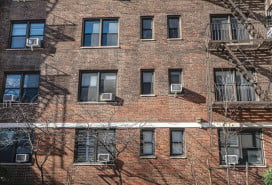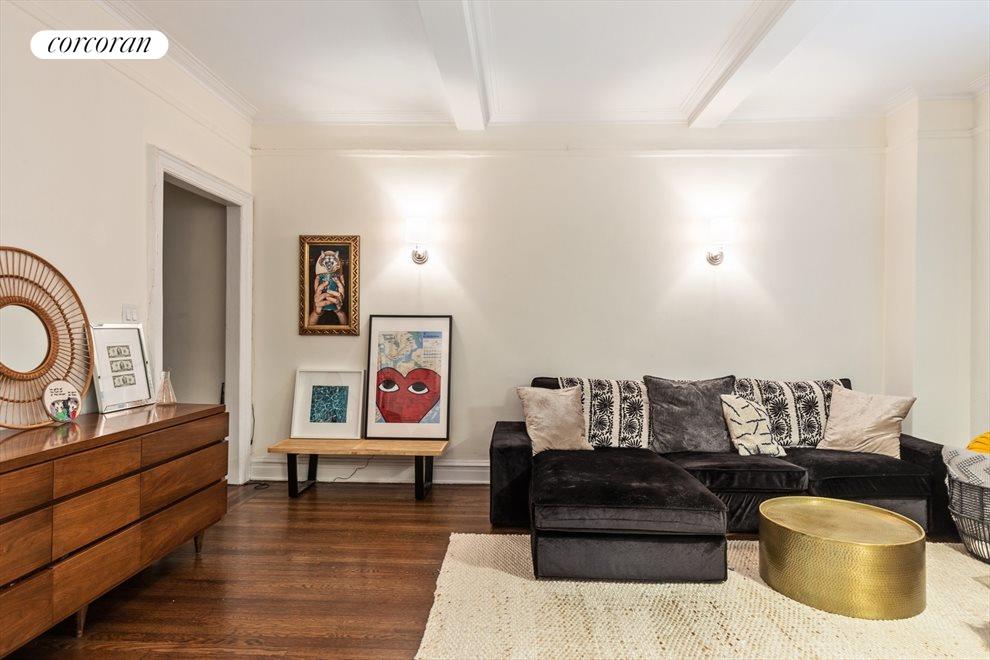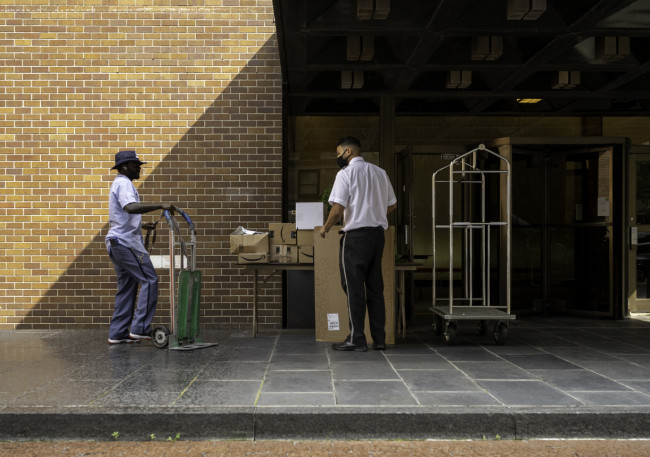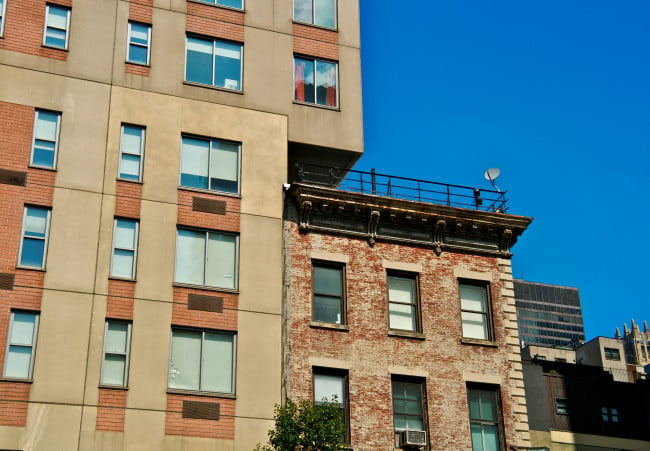What you need to know about doorman vs. non-doorman buildings in NYC
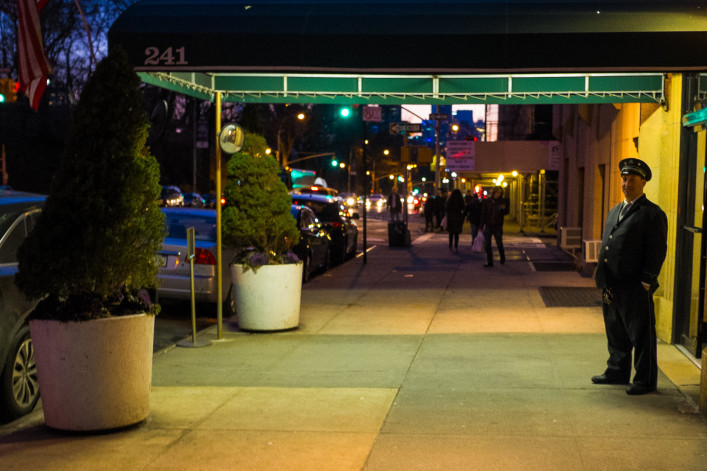
Doorman buildings have lots of pros: They tend to be well maintained and safer, and doormen can accept packages and hang onto keys for your dog-walker or cleaning person.
To have a doorman or not to have a doorman? That is the question that many a New Yorker faces when searching for a new apartment to buy.
Doorman buildings have lots of pros: They tend to be well maintained and safer, and doormen can accept packages and hang onto keys for your dog-walker or cleaning person. (You can also rent in a doorman building.)
But those luxuries will come at a price. You’ll shell out more to live in a building with a doorman manning the entrance at all times. And you’ll sacrifice some degree of privacy since your doorman will know who’s visiting you and what time they’re leaving.
Non-doorman buildings will be more affordable and more private, but can make it harder for your Amazon Prime orders to make it to your door and there’s no one monitoring the entrance to make sure that your creepy ex can’t get in.
In this week’s Buy Curious, Jason Hernandez of Douglas Elliman and Melissa Leifer of Keller Williams NYC lay out the differences between buying in a doorman building and a non-doorman building, and explain how much the presence of a doorman adds to the cost of an apartment.
[Editor's note: An earlier version of this post was published in September 2014. We are presenting it again with updated information for March 2020.]
The question:
I’m planning to buy my first apartment, and I’m trying to narrow down what I’m looking for. What are the benefits of buying in a doorman building versus a non-doorman building? How much more will it cost me? And will the property value hold up better?
The reality:
Some might think that having a doorman is more important than ever these days—when practically everything is delivered—but others disagree.
Non-doorman buildings have mostly overcome this issue by adding package rooms and supers that are more helpful than they previously were, Hernandez says. “So packages will make it in whether you have a doorman or not.”
In Leifer’s experience, her older, Baby Boomer clients prefer doorman buildings for the conveniences they offer, while her younger Millennial buyers don’t typically list a doorman as a must-have. “They would rather keep costs down and maintain more privacy,” she says.
“Whether you buy an apartment in an attended building or not involves two separate but related sets of concerns, the first having to do with the cold, hard numbers, and the second having to do with your lifestyle, and whether you’ll actually benefit from the services doormen offer,” Hernandez says.
Don't be afraid of co-ops in NYC
"Co-ops are generally 10% less expensive than condos. Their rules are designed to protect the value of your apartment and ensure your neighbors are financially sound," says Matthew Steer of SteerKelly Team at Keller Williams. "As your broker, it's our job to make sure you qualify for the building you're interested in. We have a 99.9% success rate of getting buyers board-approved." Get in touch with us >>
How much does it cost to live in a doorman building?
You’ll typically pay 12 percent more for an apartment in a building with an attended lobby versus one without a doorman, according to a 2006 study by Jonathan Miller, president of real estate appraisal firm Miller Samuel. That report might be old, but Miller says that the information still holds true.
“Under current market conditions, we are seeing a 10 to 15 percent difference between a building with a non-attended lobby and an attended lobby—with an attended lobby enjoying a premium,” he says. “However, with such a large adjustment, they represent two very different markets." Miller says that price differential only applies to comparable buildings. To underscore his point: "In no way am I suggesting that a tenement walk-up and a full-service prewar elevator building are only 10 to 15 percent apart,” he says.
Here's another way to look at it: You can budget "paying about $850 to $1,100 per square foot for a doorman co-op in Manhattan, which translates to between $531,000 and $687,500 for the average 625-square-foot one-bedroom, according to On-Line Residential, a broker listings database,” Hernandez says.
If you’re looking for a condo—which won’t come with the stringent application process or restrictions on subletting and other rules that most co-ops have—then expect to pay $1,100 to $1,500 per square foot, or between $687,500 and $937,500 for a one-bedroom.
How much does it cost to live in a non-doorman building?
“A non-doorman co-op is going to be in the $1,000 per square foot range, or $625,000 for the same one-bedroom, while a non-doorman condo would fetch somewhere in the $1,300 per square foot range, or $812,500,” Hernandez says.
However, many condo buildings without doormen are lofts or otherwise larger-than-average apartments, many of them downtown or on the West Side, which may not be what you’re searching for in a starter home.
What are you paying for in a doorman building?
“Along with paying more upfront, you’ll also spend more each month on maintenance fees or common charges to cover the salaries and benefits of the doormen in your building (though monthly fees also vary based on amenities, building repairs, the number of units, and other factors),” Hernandez says.
In addition, he adds, “Few people take into account the cost of holiday tipping, which can run you $25 to $100 or more per person (depending on your personal financial situation, as well as your relationship with the staff member). Buildings with 24-hour doormen typically employ three people to man the desk round the clock.”
“For a non-doorman building, you’re likely to save about 20 percent a month,” he says. “And remember that management companies employ superintendents to care for the building, so don’t assume that a non-doorman building means no staff of any kind.”
Do you really need a doorman?
“Don’t forget that this apartment is not merely an investment, but also a place you’ll call home,” Hernandez says. He therefore recommends considering whether having a doorman will even fit the way you live before you decide to move in (and pay all that extra money).
Do you feel warm and fuzzy seeing a friendly face in the lobby? Or would you rather skip the small talk? Another consideration: “Are you embarrassed if the doormen see you coming home at 3 a.m.?” Hernandez asks.
“The biggest complaint I get about doormen is that they know too much of your business,” Leifer says. “They will know every single person you have over to your apartment. If these visitors are troublesome they will know about it. This can greatly interfere with your privacy.”
If safety is your biggest concern, a doorman will provide security, letting in only building residents and approved guests.
“It’s also an amazing amenity to be able to just call downstairs and have the doorman find the super for you or grab you a cab,” Leifer says.
Plus, if you need to leave a key for your babysitter or dog-walker, you don’t have to wait around for them. You can simply leave it with the doorman and walk away.
And doorman buildings tend to be cleaner, Hernandez says. When a mess happens, “a doorman will call a porter for a quick clean-up.”
Sold on doorman living? Consider these apartments on the market.
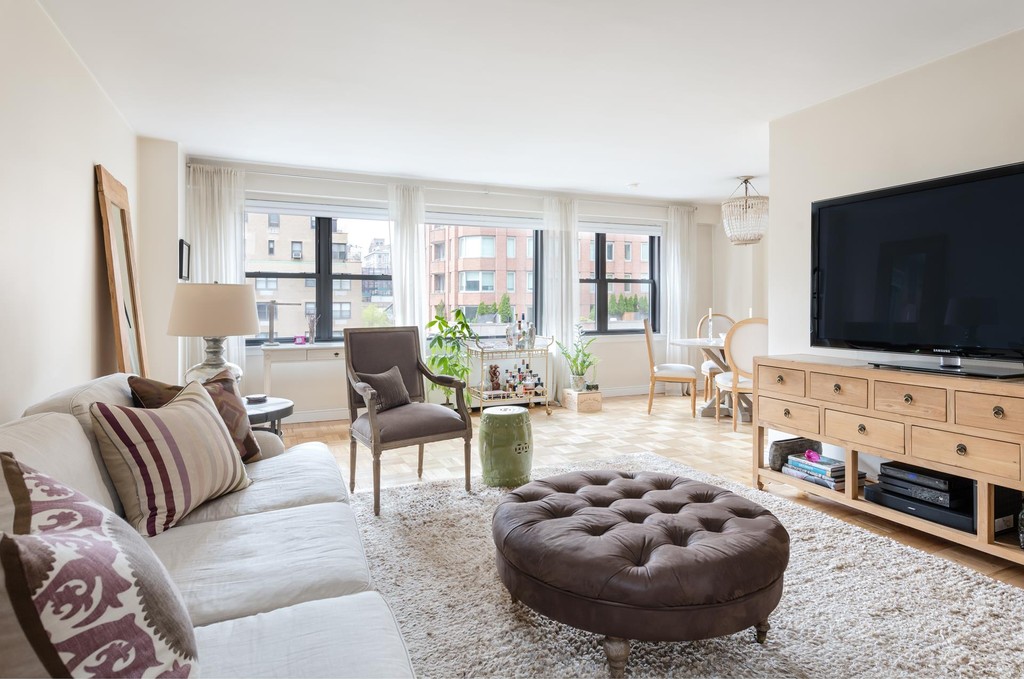
201 East 77th St., #9C, Upper East Side
Following a recent $35,000 drop, this 950-square-foot one-bedroom, one-bath co-op is now asking $860,000. Features include a wall of west-facing windows, four custom closets (including two walk-ins), a large dining alcove, a pass-through kitchen with a dishwasher, and hardwood floors. It’s located in a full-service building with a 24-hour doorman, a live-in super, a roof deck with an outdoor grill, on-site laundry, and additional storage. Maintenance is $2,080 a month.

240 East 35th St., #2B, Murray Hill
After a $46,000 price reduction, this one-bedroom, one-bath co-op is now listed for $499,000. The apartment has a wall of custom closets and hardwood flooring. It’s located in a full-service building with a 24-hour doorman, on-site laundry facilities, a courtyard, bike room, garage, storage, live-in super, and common roof deck. Pets are allowed. Maintenance is $1,543 a month. There is an assessment of $68.91 through September 2020.
595 West End Ave., #3D, Upper West Side
Listed for $800,000, this renovated, 702-square-foot, one-bedroom, one-bath condo has a large living/dining room, an eat-in kitchen with granite countertops and stainless steel appliances, high ceilings, and hardwood floors. It’s located in a pet-friendly boutique condo building with a full-time doorman, live-in super, central laundry area, common outdoor space, private storage, and a bike room. Common charges are $546 a month. Taxes are $1,118 a month. There is an assessment of $102.86 a month.
Rather live in a non-doorman building?
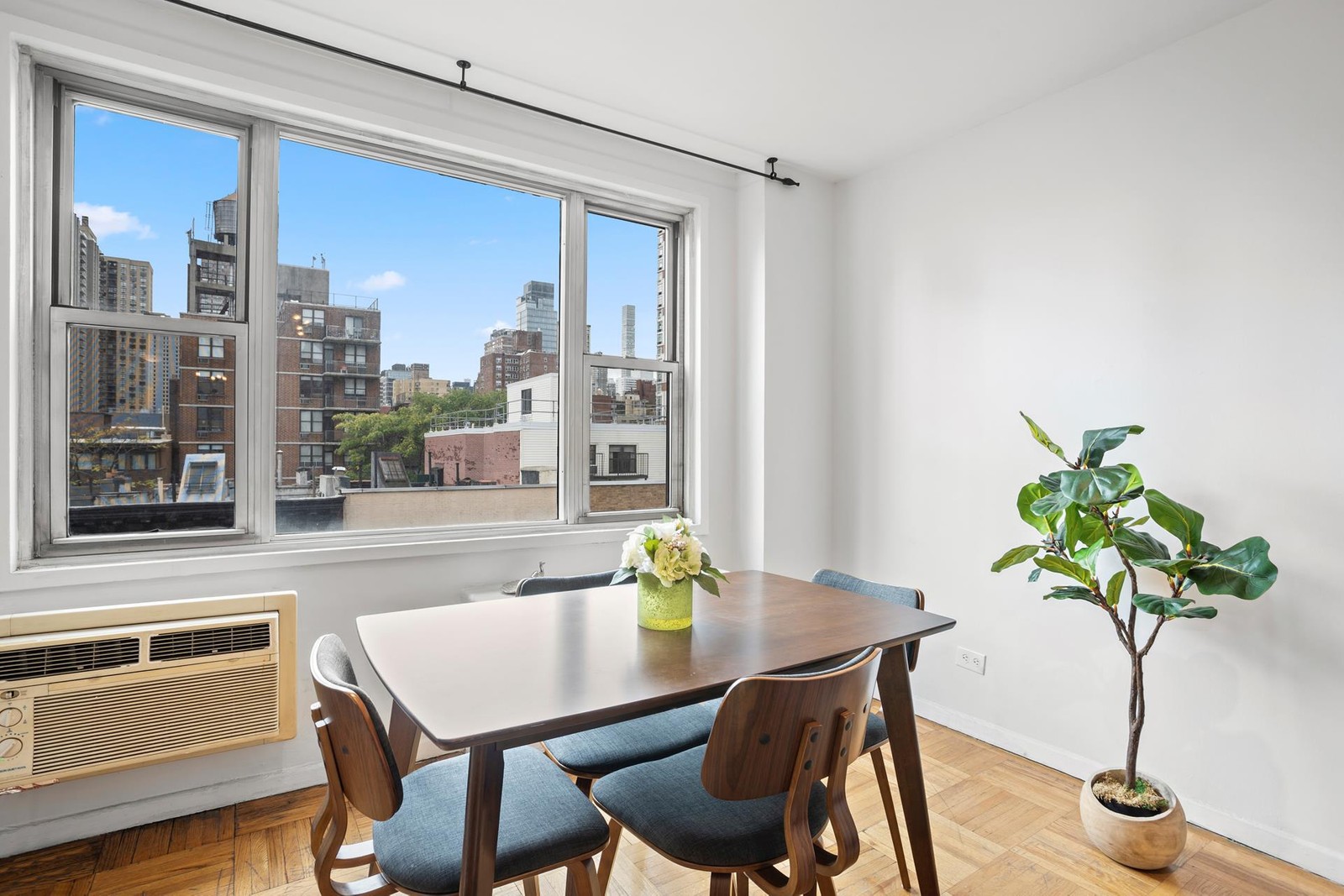
435 East 77th St., #8E, Upper East Side
After a $10,000 price reduction, this 750-square-foot, one-bedroom, one-bath unit is now asking $639,000. The apartment has hardwood floors, a separate kitchen, a dining area off the kitchen, central heating, and lots of closets. It’s located in a co-op building with a live-in super, renovated lobby, on-site laundry, bike room, and storage room. There’s no real doorman, but there is a virtual doorman. Dogs are not allowed, but cats are. Maintenance is $1,270 a month.
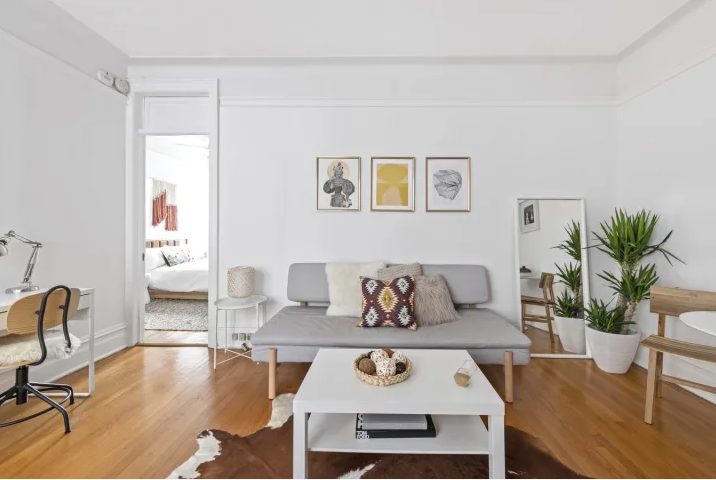
87 Columbia Heights, #45, Brooklyn Heights
Listed for $670,000, this one-bedroom, one-bath co-op has nine-foot ceilings, crown molding, refinished oak floors, a marble bathroom, two walk-in closets, and an eat-in kitchen. The unit is located in a five-story, prewar co-op building with a roof deck, live-in resident manager, bike and regular storage, a central laundry room, and video intercom security. No dogs allowed. Maintenance is $599 a month.
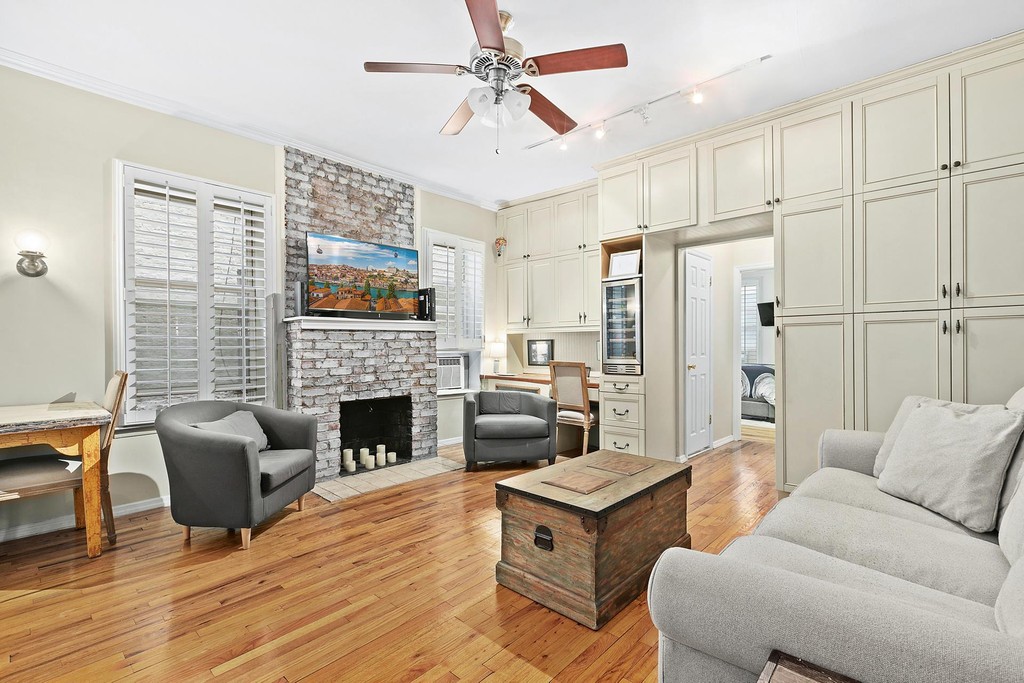
234 East 14th St., #4D, East Village
Features of this $750,000 one-bedroom, one-bath co-op include high ceilings, exposed brick, two exposures, built-in shelves, an open kitchen with custom cabinets and granite countertops, two walk-in closets, and a renovated windowed bathroom. The apartment is located in a prewar co-op building that permits pets, co-purchasing, guarantors, and sublets after one year with board approval. Maintenance is $988 a month.




